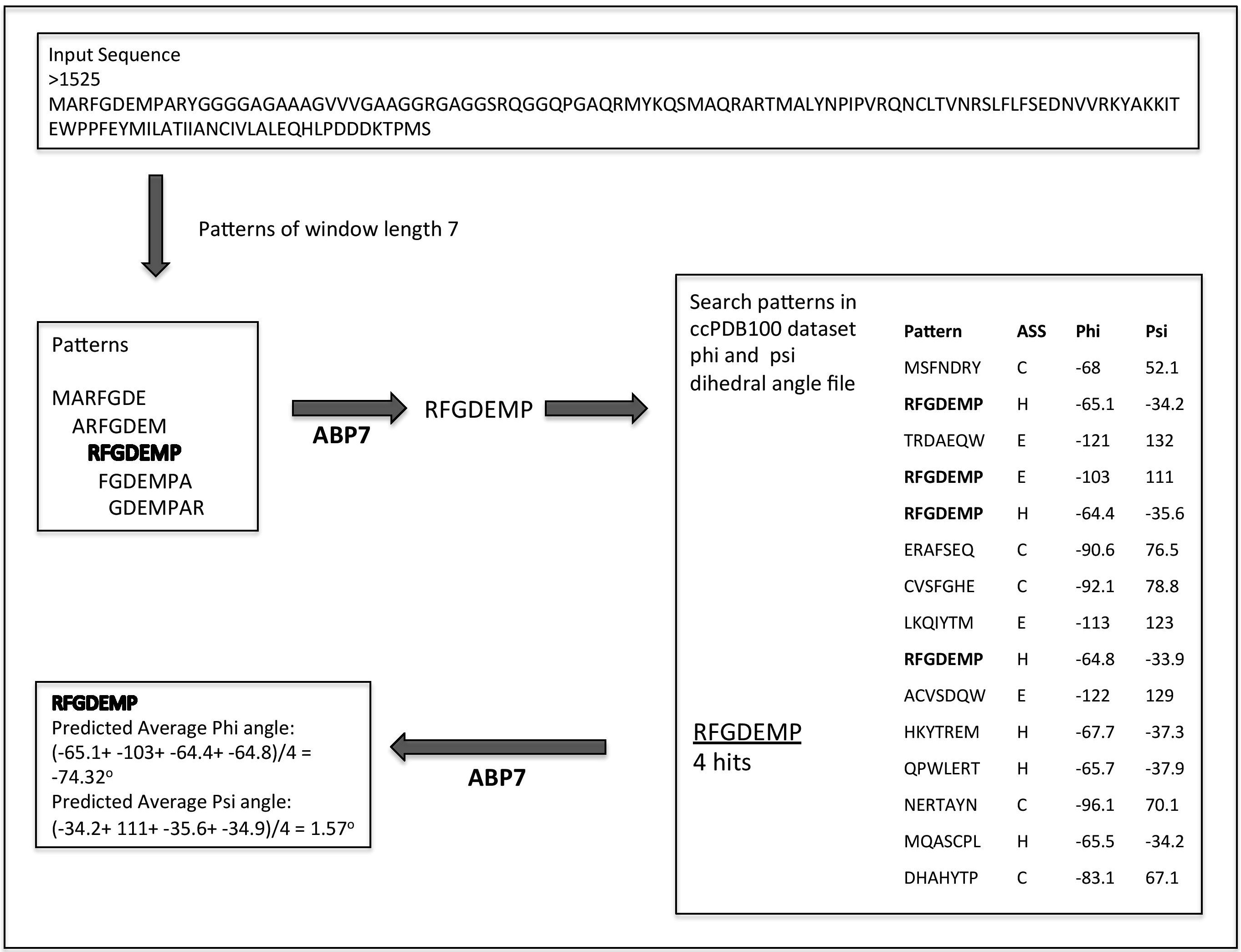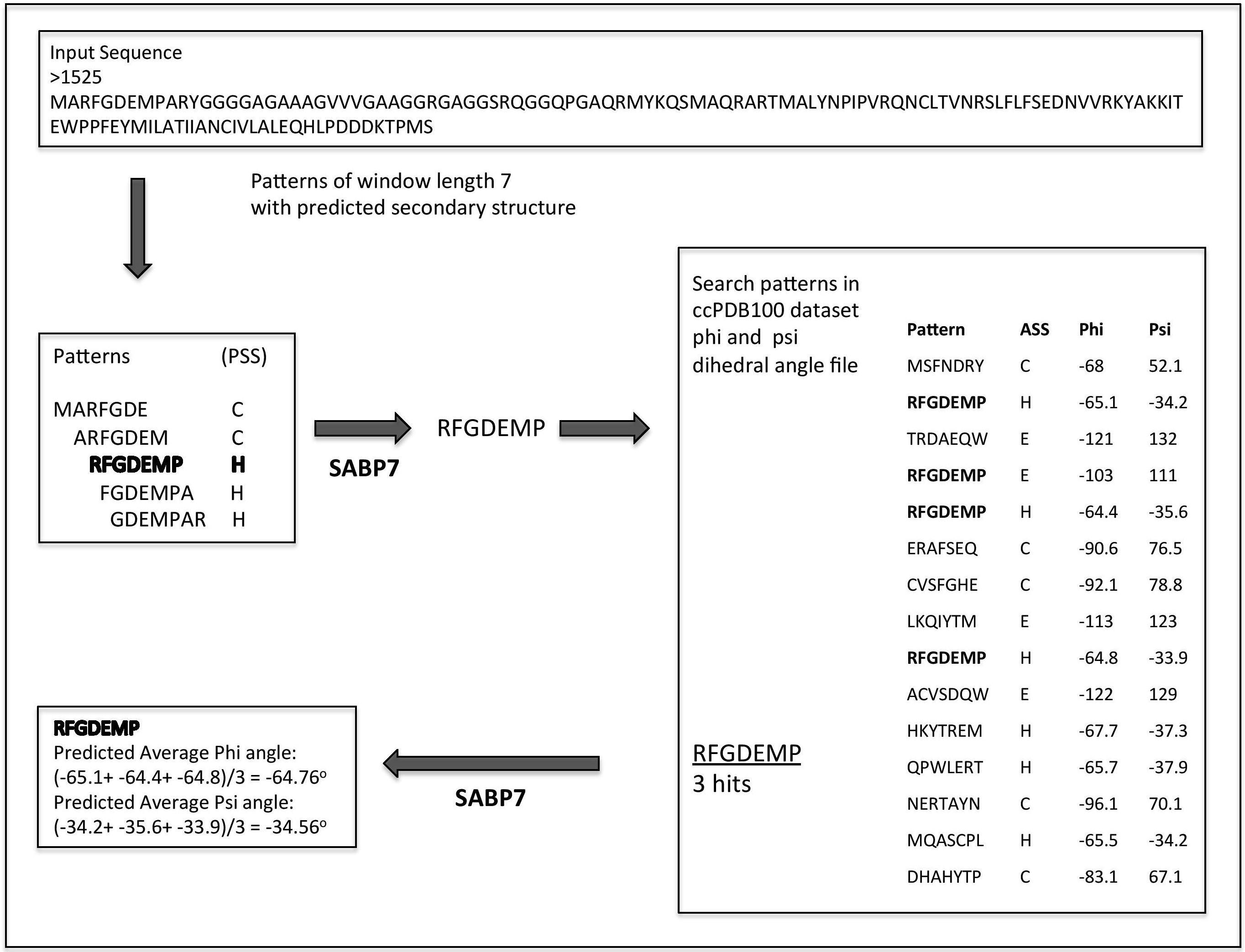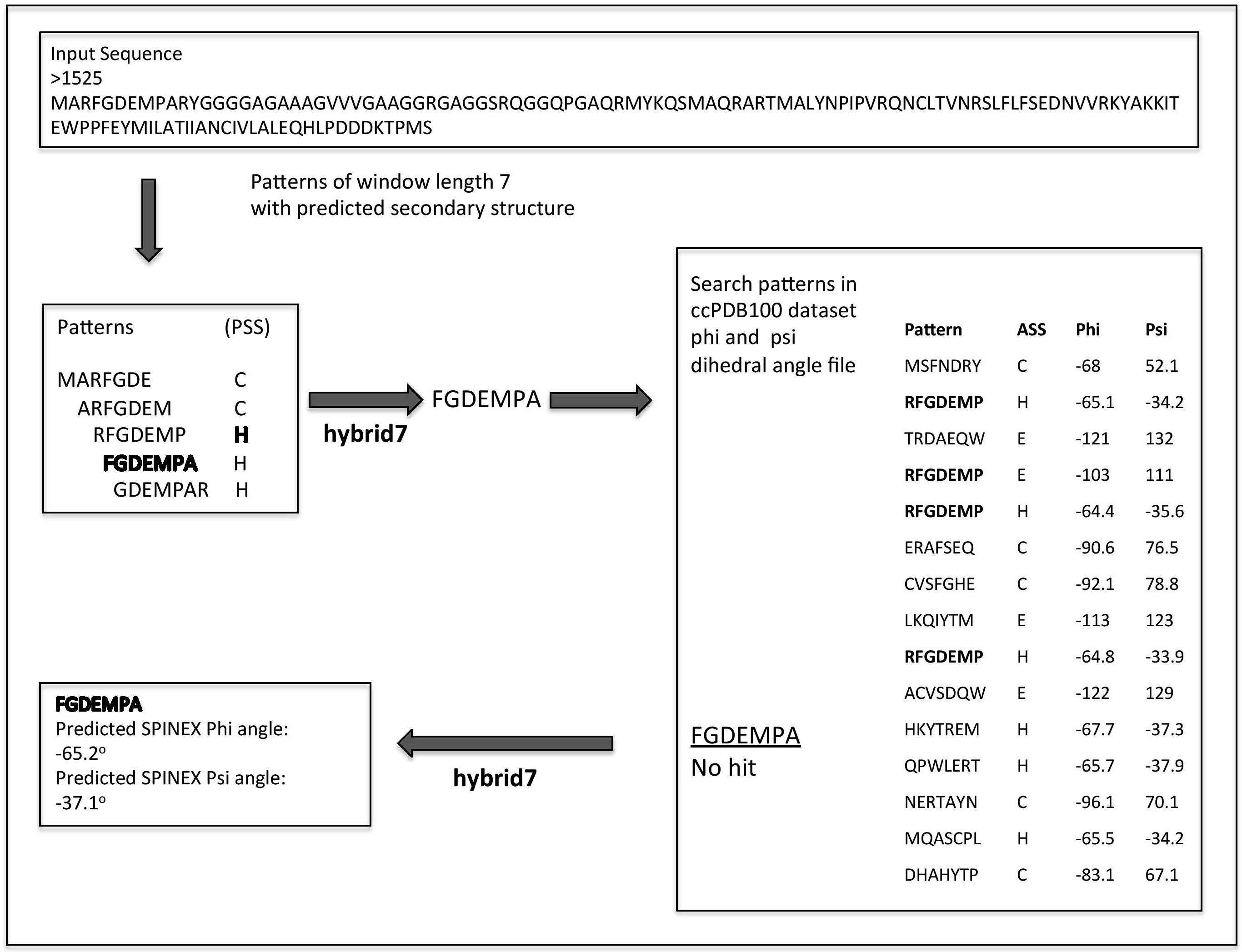


In this study we have developed three techniques for dihedral angle prediction. |
1. Average Based Prediction (ABP) technique:First we generate patterns file of length 7, 5 and 3 for every sequence. We search excatly same pattern in file having , ,  angle values of all residues in ccPDB100 dataset. Suppose we find ten patterns from ccPDB100 file, then we find the mean angle values of all residues in ccPDB100 dataset. Suppose we find ten patterns from ccPDB100 file, then we find the mean  , ,  angle values of these ten pattern and this mean value is then assigned. We have perform a fivefold cross validation on every dataset in the study. angle values of these ten pattern and this mean value is then assigned. We have perform a fivefold cross validation on every dataset in the study. In the web-server, we first predict values of pattern 7, if case no patterns of length 7 were found, we predict values using pattern 5. In the end we predict values from pattern 3, if no pattern of length 7 and 5 were found. ccPDB dataset is used for predicting the average  , ,  angles. The dataset can be downloaded in the data section. angles. The dataset can be downloaded in the data section. |
2. Secondary structure Average Based Prediction (SABP) technique:First we generate three patterns file of length 7, 5 and 3 for every sequence. Based upon the predicted secondary structure state of the center residue, mean average angle was calculated. e.g. If center residue is predicted as Helix, then we search excatly same pattern with same secondary structure state (as that of query pattern) in the file having , ,  angle values of all residues in ccPDB100 dataset. Suppose we find ten patterns from ccPDB file, then we find the mean angle values of all residues in ccPDB100 dataset. Suppose we find ten patterns from ccPDB file, then we find the mean  , ,  angle values of these ten pattern and this mean value is then assigned. We have perform a fivefold cross validation on every dataset in the study. angle values of these ten pattern and this mean value is then assigned. We have perform a fivefold cross validation on every dataset in the study. In the web-server, we first predict values of pattern 7, if case no patterns of length 7 were found, we predict values using pattern 5. In the end we predict values from pattern 3, if no pattern of length 7 and 5 were found. |
3. Hybrid technique:This is a hybrid module which combines the best result of SABP technique and SPINEX. The Average angle prediction technique has a fault of not having 100% coverage. To overcome the problem of coverage, we predict the rest of the residues , ,  angle using SPINEX angle using SPINEX |
1. Average Based Prediction (ABP) techniqueGo to Top |
 Figure 1: Working of ABP technique. Pattern "RFGDEMP" is searched in ccPDB100 dataset having |
2. Secondary structure Average Based Prediction (SABP) techniqueGo to Top |
 Figure 2: Working of SABP technique. Pattern "RFGDEMP" with middle residue D having helix as predicted secondary structure is searched in ccPDB100 dataset having |
2. Hybrid techniqueGo to Top |
 Figure 2: Working of hybrid technique. First SABP technique is applied to predict |